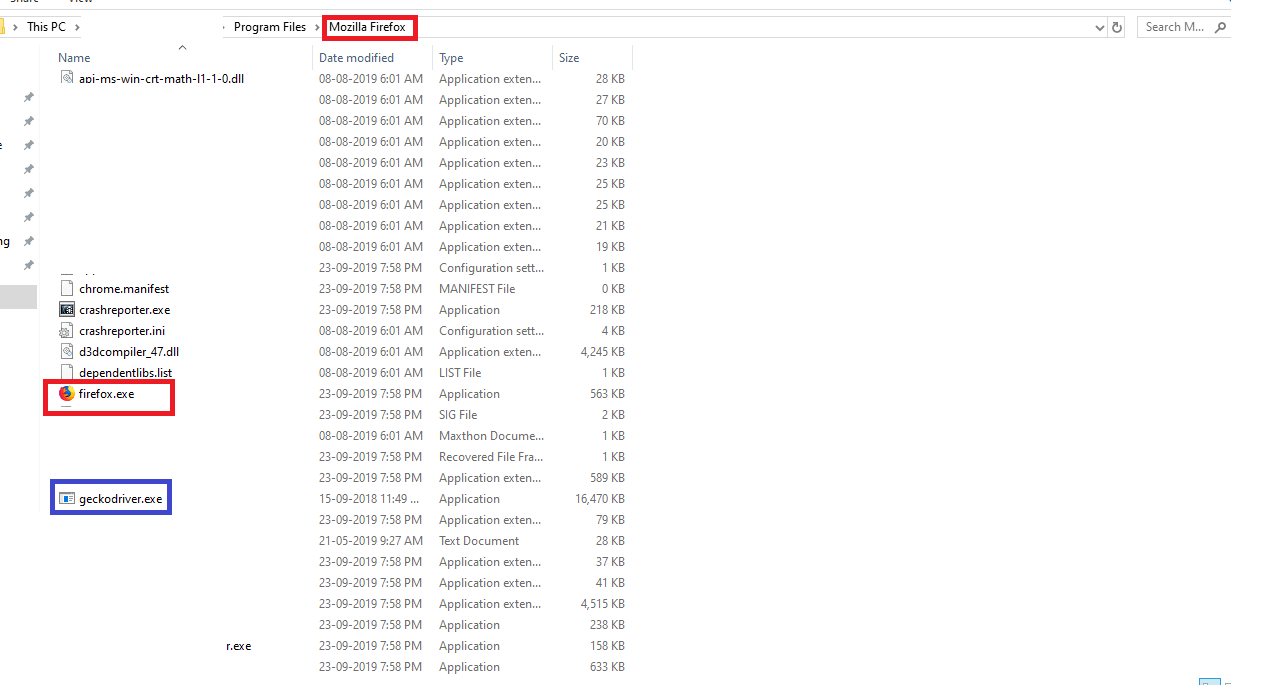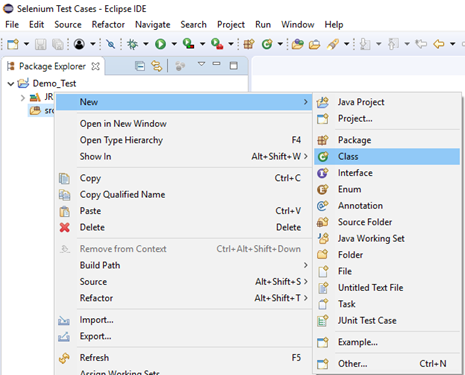

- Direct all the driver commands through gecko driver. drivers#
- Direct all the driver commands through gecko driver. code#
Direct all the driver commands through gecko driver. drivers#
WC3 Webdriver is a constantly evolving standard, so some things may or may not work at any given time.įurthermore, out of date drivers probably identify as WD3, while only implementing a few methods and retaining JSONWire functionality. Your other option is to use this module in conjunction with your choice of testing modules, like Test::Spec or Test::More as you please. It includes convenience testing methods for many of the selenum methods available here. If are writing automated tests using this module, you may be interested in Test::Selenium::Remote::Driver which is also included in this distribution. $d->execute_async_script('return "hello"') # timeout before hitting LWP::UserAgent's read timeout # is no callback here, Selenium will block for the entire duration of # Async scripts only return when the callback is invoked. $d->set_timeout('script', 1000) # S::R::D wants milliseconds! $d->ua->timeout(2) # LWP wants seconds, not milliseconds! Say $d->ua->timeout # 180 seconds is the default Or by configuring the timeout on the fly as necessary: use feature qw/say/ My $d = Selenium::Remote::Driver->new( ua => $timeout_ua ) $timeout_ua->timeout(360) # this value is in seconds! You can get around this by configuring LWP's timeout value, either by constructing your own LWP and passing it in to ::Driver during instantiation my $timeout_ua = LWP::UserAgent->new For example, setting the asynchronous script timeout greater than the LWP::UserAgent timeout and then executing a long running asynchronous snippet of javascript will immediately trigger an error like: Error while executing command: executeAsyncScript: Server returned It's possible to make Selenium calls that take longer than the default LWP::UserAgent timeout. ) įor example, a testing-subclass may extend the web-element object with testing methods.

Finally, just remember that you don't have to instantiate WebElement objects at all - they will be automatically created when you use the find_* methods.Ī sub-class of Selenium::Remote::WebElement may be used instead of Selenium::Remote::WebElement, by providing that class name as an option the constructor: my $driver = Selenium::Remote::Driver->new( webelement_class =>. If you don't call find_* method first, all your further actions will fail for that element. Once you find the required element then you can perform various actions. To interact with any WebElement you have to first "find" it, read the POD for find_element or find_elements for further info. The POD for that module describes all the methods that perform various actions on the WebElements like click, submit etc. So any method that deals with WebElements will return and/or expect WebElement object. Selenium Webdriver represents all the HTML elements as WebElement, which is in turn represented by Selenium::Remote::WebElement module. So a rule of thumb while invoking methods on the driver is if the method did not croak when called, then you can safely assume the command was successful even if nothing was returned by the method. If no error occurred, then the subroutine called will return the value sent back from the server (if a return value was sent). The module will then croak with the error message associated with this code.
Direct all the driver commands through gecko driver. code#
If an error occurs while executing the command then the server sends back an HTTP error code with a JSON encoded reponse that indicates the precise Response Error Code. Selenium::Remote::Driver uses the JsonWireProtocol And the WC3 WebDriver Protocol to communicate with the Selenium Server. If you'd like additional browsers besides these, give us a holler over in Github. See Selenium::Chrome, Selenium::PhantomJS, Selenium::Edge, Selenium::InternetExplorer,and Selenium::Firefox for details. USAGE Without Standalone ServerĪs of v0.25, it's possible to use this module without a standalone server - that is, you would not need the JRE or the JDK to run your Selenium tests.

To use this module, you need to have already downloaded and started the Selenium Server (Selenium Server is a Java application). Using this module together with the Selenium Server, you can automatically control any supported browser. This module sends commands directly to the Server using HTTP. You can find bindings for other languages at this location: This module is an implementation of the client for the Remote driver that Selenium provides. Selenium is a test tool that allows you to write automated web application UI tests in any programming language against any HTTP website using any mainstream JavaScript-enabled browser. My $driver = Selenium::Remote::Driver->new Version 1.46 SYNOPSIS use Selenium::Remote::Driver Selenium::Remote::Driver - Perl Client for Selenium Remote Driver VERSION


 0 kommentar(er)
0 kommentar(er)
